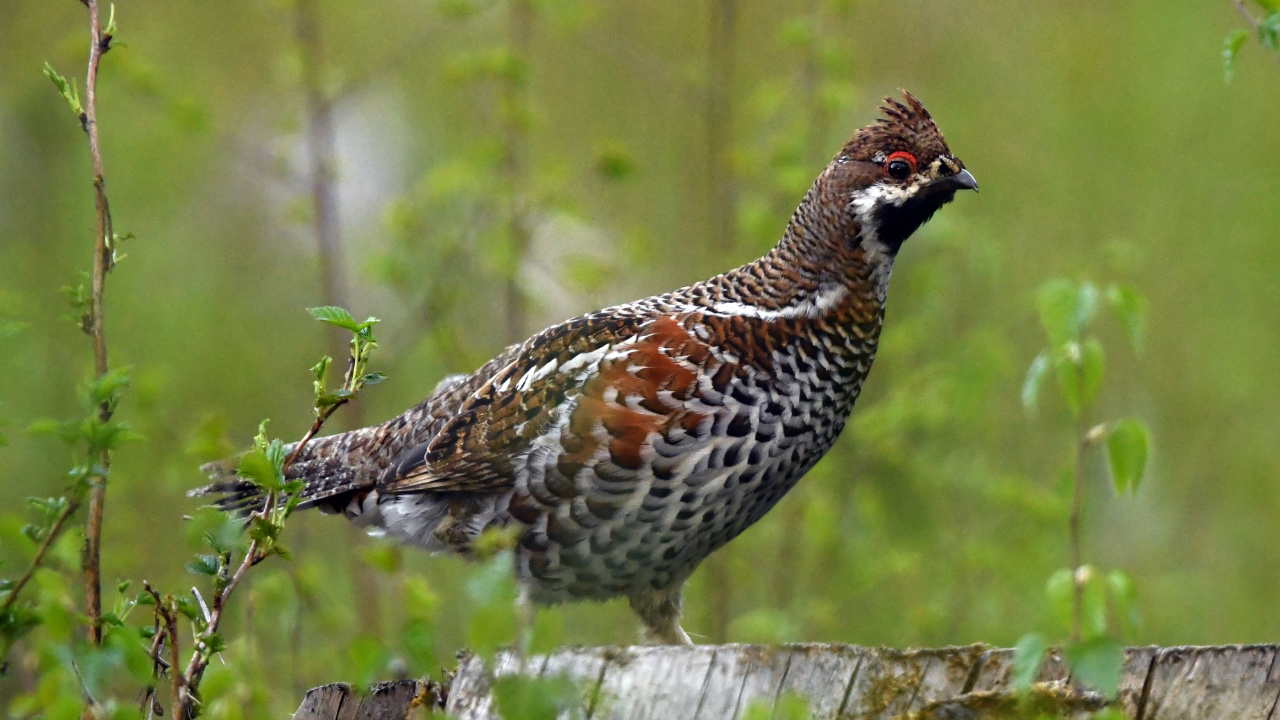Album about the Knyszyn Forest
For five years two biologists and ardent nature photographers were traversing the most distant recesses of the Knyszyn Forest. They took pictures of flora and fauna. They discovered places where one can come across European Bison, weasels and red deer. Their journey culminated in an album, in which Prof. Marek Konarzewski, corresponding member of the Polish Academy of Sciences, and Dr. Janusz Kupryjanowicz share the beauty of the Knyszyn Forest with us.

The hazel grouse. A photo from the album Ścieżkami Puszczy Knyszyńskiej. Along the paths of the Knyszyn Forest by Prof. Marek Konarzewski and Dr. Janusz Kupryjanowicz.
The book Ścieżkami Puszczy Knyszyńskiej. Along the paths of the Knyszyn Forest was published by University of Białystok Publishing House. The album, with parallel texts in Polish and English, presents over 300 unique photos of the Knyszyn Forest and its extraordinary plants and inhabitants. It has been reviewed and meets all the requirements of the monographs.
“Predators turned out to be the most difficult to capture, because they are rare, skittish, nighttime animals. We also had a problem with compiling interesting winter photos. While preparing the album for publication, during the last 5-6 years, we haven’t had a true winter. This year's winter is beautiful, but it's already too late. We have finished the work on the album last fall, ” says Prof. Marek Konarzewski, who together with Dr. Janusz Kupryjanowicz, works at the University of Białystok.
Foothill-like landscapes
The Knyszyn Forest is the largest complex of lowland forests in Poland, bordering Białowieża Forest in the south and Augustowska Forest to the north, fortified from the east by the border river Świsłocz, while the Białystok suburbs nip into it more and more from the west.
In many parts, especially around the small town of Supraśl, contiferous stands reign, seemingly transplanted life from Siberia. But further west, just past the outskirts of the small town of Czarna Białostocka, they give way to the deciduous forests of the Jesionowe Hills, where many spots suggest you may be at the neighbor’s – in the Białowieża Forest. But the later cannot lay claim to the same vast, nearly foothill-like, landscapes that you can experience wandering the forest paths toward Sokółka and Krynki. Upon its many paths it is still easier to meet European Bison than a tourist here. Wandering through fathomless backwoods wetlands, one will quickly understand why insurgents chose them as a refuge during the January Uprising of 1863.
Changes in the forest
The forest is changing before our own eyes. Her once boreal quality is rapidly disappearing under the pressure of mounting global warming. The absence of snowy winters, increased droughts and hurricane-force winds are transforming the forest at an unprecedented pace. Spruces, until recently the Forest’s calling-card, are dying en masse, giving way to hornbeams and lindens. But the forest endures and will endure.
